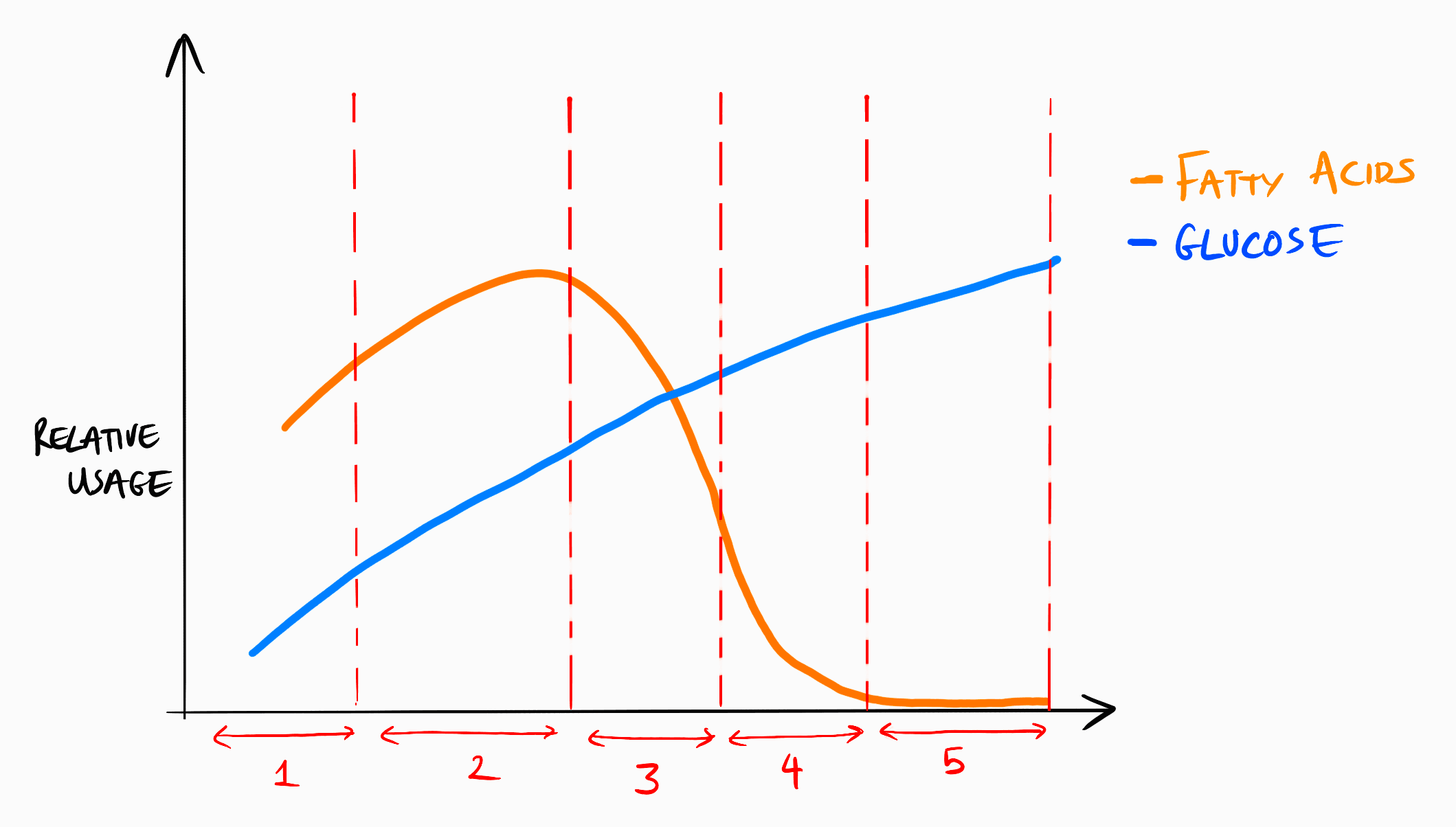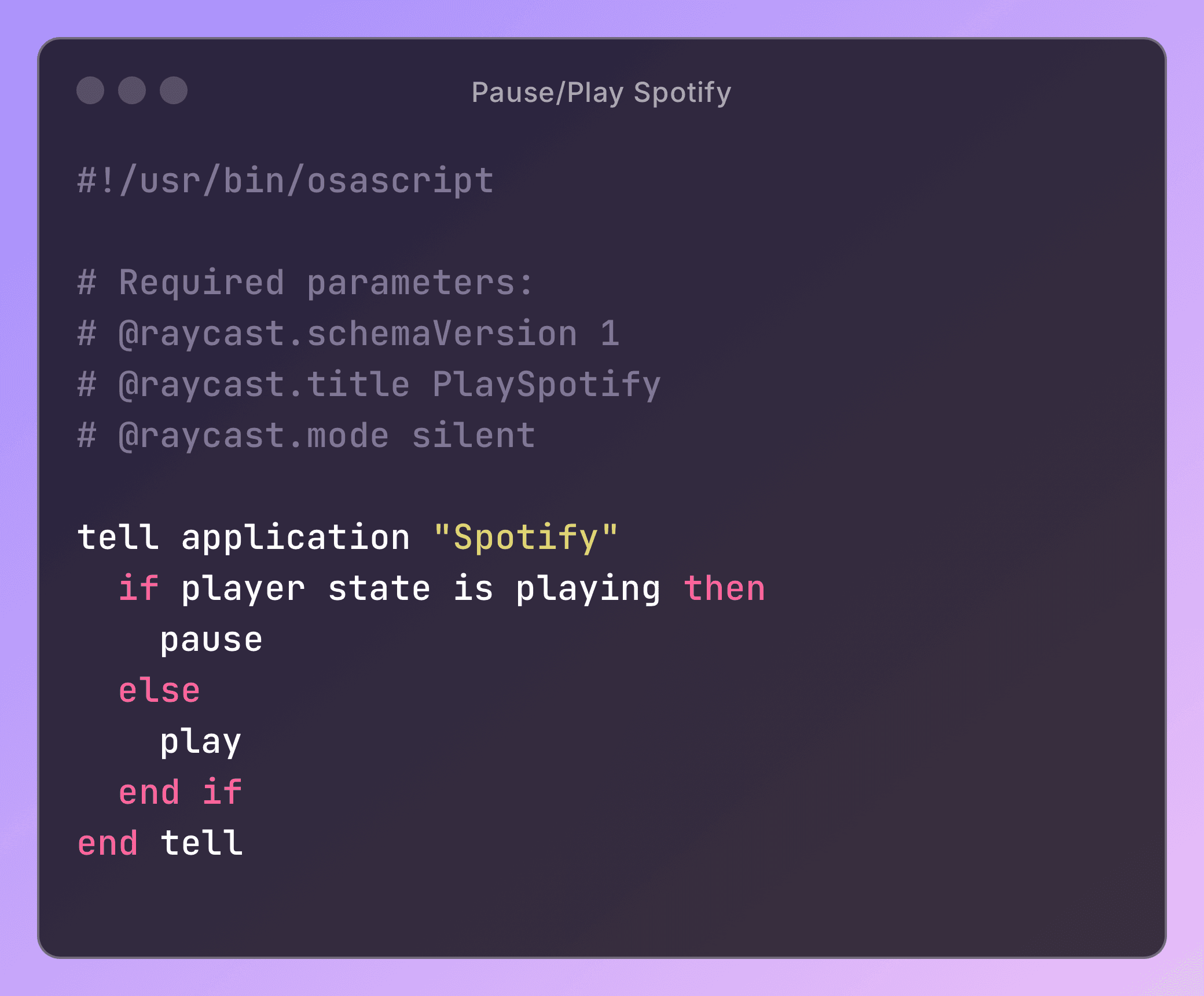If you’ve had any experience in the endurance world, you’ve likely heard of the significance of Zone 2 training. For beginners in this field, such as myself, understanding why everyone emphasizes it can be challenging. The usual quick explanation involves phrases like “builds your aerobic base” or “increases your mitochondrial and capillary density,” as if we all know what that means. I got tired of all this jargon, so I did a deep dive myself to answer my questions. This article serves as an appendix to my marathon article.

When I first started marathon training, I was constantly bombarded with "run slow to run fast" on every article and in every YouTube video. Huh? What happened to training specificity? If I want to run fast and far, shouldn’t I train by running fast and far? Well, yes, but not together. Many people may think that running at marathon pace four times a week and going as far as possible each time will prepare them for the marathon. Unfortunately, that’s not the case. We want to run long distances slowly and run fast over shorter distances.
Since our goal is to run faster for longer periods, we need an efficient and powerful engine. A powerful engine that lacks long-term efficiency (i.e., uses up all the fuel quickly) can only go fast for a short time. Conversely, an efficient but weak engine can last long but only at slow speeds. Building both efficiency and power is crucial for running fast and far. Physiologically speaking, the engine refers to the respiratory and muscular systems of the body, and improvements in both will enhance the efficiency and power of your run.
Improving your body’s efficiency and power output can (or at least in my humble opinion) be reduced to an energy supply problem. A higher rate of energy supply (feeding your body more energy per minute) for a longer period enables you to do more work for longer. If you can improve the efficiency and rate of energy production, you can output the same work for the same effort. Let’s take a look at how the body does this…
ATP (Adenosine Triphosphate) is often referred to as the body’s energy currency. Your body uses ATP to drive reactions within the body. For example, muscle contraction requires a payment of ATP. Nothing’s free in this life! Naturally, a larger or faster muscle contraction demands more ATP. Since the heart is a muscle, an increased heart rate requires more ATP, prompting your body to produce more ATP to pay for that increase in heart rate.
Now you may be thinking, can we store ATP in our bodies, similar to a monetary bank? Yes, but only in very very small quantities (since ATP is a very high-energy molecule, storage is costly), and these are for emergency purposes only. For day-to-day living, the body only makes the required amount of ATP at any given point. But what happens if your body is unable to create the required amount of ATP? Well, you’d die. But the body is smarter than that. Instead of storing ATP directly, the body stores energy in a different form called adipose tissue, or body fat. You can also store energy from carbohydrates in the form of glycogen (stored glucose), however, this is small (around 2000 kcal - PMID: 22232606) relative to the main store of adipose tissue (10,000+ kcal). All cells in your body can produce ATP from these sources, however the ones with mitochondria are better at doing so (we all remember that mitochondria are the powerhouses of the cell, right!?).
So we know the body can store energy as fat and glucose, but how does it produce ATP from this? The answer is cellular respiration. The two substrates, fatty acids and glucose, are metabolised into ATP in the mitochondria within the cells. We refer to the metabolism of fatty acids as fat oxidation and glucose as glycolysis. There is a fundamental performance difference between these two pathways. Fatty acid metabolism is slower compared to glycolysis, but it yields significantly more ATP. This means glucose is the preferred source of ATP when it is needed quickly and easily. It’s also important to note that glycolysis produces lactate—a compound usually linked to fatigue (we’ll see why that isn’t really the case). The body cleverly uses both pathways in different ratios depending on the exercise intensity, but generally, we use a combination of both! (PMID: 11579177).
A common framework for organising different energy intensities is through the use of Zones (usually 1-5). The higher the zone, the more intensive the activity, and the higher your heart rate. Due to the correlation between intensity and heart rate, heart rate usually defines the bounds between zones. You may have heard something like “Zone 2 exists between 65-75% of your maximum heart rate.” Since there are many interpretations of zones, we will use Dr. Iñigo San Millán’s expert opinion. He organises the zones mainly by the changes in the ratio of the two metabolic pathways of fatty acid oxidation and glycolysis.
- Zone 1: Can walk and hold a conversation for a significant amount of time. At very low intensities, the body prefers to use fatty acids as the primary substrate since this produces the most ATP and there is no “rush” for energy. A common misconception is that at low intensity, glucose is not used; however, it is, albeit in small quantities.
- Zone 2: Can hold a conversation with difficulty for an extended period of time. As you increase from Zone 1 to Zone 2, the muscles demand more energy and thus higher ATP production. As a result, metabolism in both substrates increases, but towards the higher end, fatty acid oxidation reaches a maximum. The mitochondria in your body simply cannot oxidise any more fatty acids. This zone is around 5-10 bpm in length (regardless of what those online calculators may say!).
- Zone 3: You can only speak in phrases. Fatty acids, now at their maximum, can no longer meet the increase in metabolic demand. This is where glucose steps in to help meet the high demand with its rapid ATP production. As we creep up to the upper end of Zone 3, the body decides to favour glucose over fatty acids for ATP production, almost as if to say "we don't need you anymore, the glucose can handle it from here".
- Zone 4: A word…maybe? At this point, there is pretty much no fatty acid oxidation. Glucose is now the primary source of ATP. No conversation, maybe one word.
- Zone 5: Silence. Here, you are at the maximum of your aerobic capacity (VO2 max). Intensity is at its maximum, lactate levels are high, and you can probably only sustain this for a few minutes. Anaerobic respiration may also be used here, but not exclusively or dominantly.
- Zone 6: Sprinting. Pure anaerobic stage. Not enough oxygen, not enough glucose. Another system is used called the ATP-Phosphocreatine system, which generates ATP from stores within the muscles themselves.

Remember how we said that even the skinniest person can store around 10,000 kcal of energy as fat (adipose tissue), but our bodies can only store around 2000 kcal of energy through glycogen? We can increase our fat stores very easily (think post-Christmas holidays), but we cannot increase our glucose stores as easily. This renders glucose a precious commodity—think of it as the gold mine or jet fuel of our bodies. We don’t want to use such valuable fuel for common daily activities. We want to use it when we are getting chased by predators, which is why we see a dramatic increase in glycolysis above Zone 3. It all comes back to survival in the wild!
When glucose is metabolised, lactate and hydrogen ions are produced as a by-product (yes, even in aerobic conditions Zones 1-5, PMID: 3536591) Although it was previously thought that lactate causes muscular fatigue, it is now thought to be due to the presence of hydrogen ion’s (PMID: 28983090). These ions alter the pH within the muscles, contributing to fatigue. Lactate is actually a very valuable compound. Mitochondria can “shuttle” the lactate back into the cell to use as a direct energy source—an energy source that is considered “better” than glucose since it is quicker and easier to metabolise! Advanced athletes can do this at a higher capacity compared to the average Joe. Lastly, a common term thrown around is the “lactate threshold,” which is the point at which your lactate production exceeds your lactate clearance rate. As you guessed, you can increase this threshold by training in Zone 2!
During a marathon, we primarily use the aerobic system. This means that both glycolysis and fat oxidation are the primary sources of ATP and, therefore, energy. But, as we know, glycogen stores in our bodies are significantly smaller than adipose tissue (fat) stores. Therefore, during a marathon, you will not run out of fat to “burn,” but you will run out of glucose (if you aren’t fuelling). This is why you hear about carbohydrate loading or carb-fulling during an endurance event—to ensure your glucose stores are topped up so when your body needs ATP quickly, it can use glucose (since glycolysis is a quicker and easier process) to make that ATP. For instance, during a hard uphill stretch or the last few kilometres, it is likely you will enter Zone 4, where fatty acid oxidation is negligible. Without keeping your glucose topped up, you will not be able to push hard at a moment’s notice!
Of all zones, Dr. Iñigo San Millán has found that Zone 2 stimulates mitochondrial function the most, making it optimal for gains in mitochondrial performance. This may be due to the fact that Zone 2 stimulates the most slow-twitch muscle fibres, which contain more mitochondria. The stimulation triggers adaptations in the mitochondria to increase their count and improve their respiratory capacity. These adaptations lead to better mitochondrial performance, making ATP generation more efficient.
One major improvement is the body’s reliance on fat. With improved mitochondrial function, the body can utilise fat oxidation more efficiently, delaying the point at which glycolysis takes over. This is largely why an elite athlete’s Zone 2 pace is significantly faster than that of an untrained individual (assuming all other factors are equal). With higher fat utilisation, you can do more work before glycolysis takes over (so you can run faster at a lower heart rate with minimal lactate build-up!). Consequently, the lactate threshold is increased, and you can expect increased lactate clearance rates due to more lactate transporters. It’s a win all around!
In the same way that Zone 2 mainly targets the fatty acid pathway, higher zone training (4-5) stimulates glycolysis (since fat oxidation is negligible at these intensities) better than Zone 2. As mentioned above, Zone 2 can improve your lactate clearance performance, however not nearly as much as Zone’s 4-5. Strengthening the glycolysis pathway improves your ability to remove lactate from the blood and also the efficiency of the metabolic reaction.
An elite athlete will use more glycolysis in the higher zones, simply because they are able to. They have much higher capacity for generating ATP compared to the average person. This, however, means that more lactate is produced. To counteract this, the body also improves its lactate clearance capacity by creating more active transporters (MCT-1) that are responsible for shuttling the lactate back into the cell for energy! The more lactate we can shuttle back, the more energy we can extract from a single energy cycle. You will actually see that higher levels of lactate are produced in elite athletes, however their blood lactate is significantly smaller (~3) than an average human (~8), thus delaying the onset of fatigue.
All of this means that elite athletes can sustain higher power outputs for longer periods of time. They will reach their lactate threshold later than a sedentary person, and will be able to keep their lactate levels lower once they pass their lactate threshold. They’re just better in every category!
The training you incorporate into your prep will vary depending on your goals. For the marathon, it is important to train both in Zone 2, for general metabolic adaptations, but also in the higher zones of 4 and 5, for the performance increases in glycolysis. The general rule in the endurance world is to do an 80/20 split between Zone 2 and high intensity training. Training in Zone 4/5 all the time will prove to be fatiguing (mentally and physically), rendering it unsustainable. Dr Inigo recommends at the very least, 2.5 hours of Zone 2 training per week to see metabolic adaptations.
So your fancy watch tells you that you were in Zone 2, 70% of your strength gym session this morning. Does this count to your weekly time in Zone 2. Absolutely not. The watch picks up on your recovering heart rate that passes through Zone 2. It is not steadily within Zone 2, therefore does not stimulate the mitochondria as we intend. Consider this when planning your Zone 2 training around your strength training work!


